
What Are Dill Pickles?
Dill pickles are the most popular type of pickle. They are, quite simply, brined cucumbers flavored heavily with dill. And pickle recipes for dill vary: Some include garlic, pickling spice or even spicy peppers. All, though, rely upon dill whether fresh, dried or in seed form.
If you’d prefer store-bought to homemade, try our Test Kitchen’s favorite dill pickles. You’ll find plenty of dill options in the grocery aisle: moonshine pickles, whole, spears, chips, slices —every iteration imaginable. No matter the slice, dill pickles go well on burgers, Chicago-style hot dogs or even a plain pickle on a stick like you’d eat at the fair.
Find out if pickles are good for you!

What Are Kosher Pickles?
Just like Kosher salt, Kosher pickles aren’t necessarily Kosher in terms of preparation. The term here refers to a style of pickling using a salt brine (made with Kosher salt, of course) and generous amounts of garlic and dill. While dill pickles may have garlic, Kosher pickles need to have garlic—it’s part of the traditional recipe. That’s what makes them different!
If you’ve ever wondered why pregnant women crave pickles, it could be because the salt causes the body to retain fluid, thus staving off dehydration. Pregnant or not, though, the salty brine of Kosher pickles is hard to beat. Pair quartered spears with crispy fried chicken thighs, serve a whole spear with a classic sub sandwich or eat slices straight out of the jar.

What Are Sweet Pickles?
The best cucumbers for pickling have thin skin. If you can find those in your grocery store or in your garden, you can make your own sweet pickles with a brine containing sugar. The brine gives these pickles just a touch of sweetness (don’t worry—these types of pickles aren’t candy-sweet).
Recipes vary and call for all sorts of spices and aromatics. All recipes for sweet pickles, though, will call for vinegar, sugar and—quite often—thinly sliced onion. To really allow the brine to absorb, you’ll want to cut the cucumbers into slices rather than brining them whole. Once they’re ready to eat, add sweet pickles to fresh green salads, potato salads or lunch sandwiches.
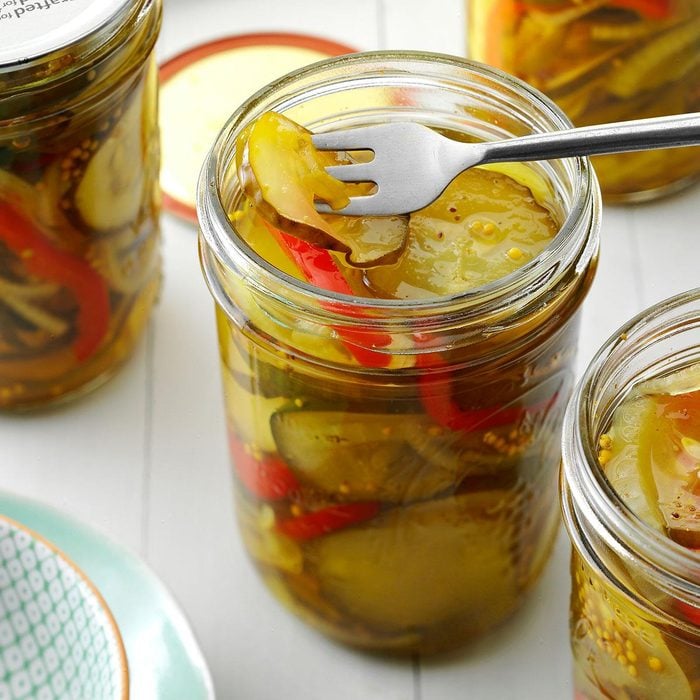
What Are Bread and Butter Pickles?
Despite the name, bread and butter pickles don’t taste like bread or butter. These thinly sliced pickles are actually a type of sweet pickle thanks to the sugar used in the brine. The name “bread and butter” comes from a farming couple who wanted to trademark the name for their signature pickles back in the 1920s.
Today, bread and butter pickles walk that perfect line between sweet and sour. The brine calls for plenty of vinegar as well as sugar to get that just-right mix. These recipes typically call for mustard seed and celery seed, too, but as with any pickle, there are lots of delicious variations.
Bread and butter pickles will go well with the same types of food you’d pair with sweet pickles. They’ll also add great flavor to burgers or tuna salad, and can be chopped into relish to use in Southern deviled eggs or on hot dogs.

What Are Sour Pickles?
The health benefits of fermentation are still being researched, but the probiotics formed in the process could aid in digestion and help strengthen our immunities. Sour pickles are a great source of fermented food. They are made in a vinegar-less brine and fermented in a mix of water, pickling salt and spices. When eaten within the first six weeks of fermenting, these pickles are called half-sour. After that, you’ll find them canned and called sour pickles.
Unlike other pickles, they don’t have that vinegar bite or sweetness. Quite simply, they’re sour! Enjoy them with brats, on charcuterie boards or on burgers.
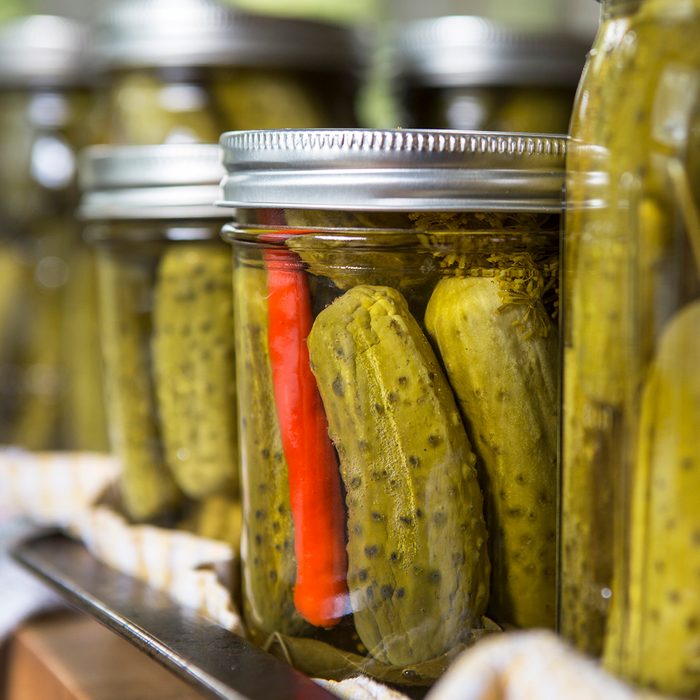
What Are Gherkin Pickles?
A gherkin is a small variety of cucumber. They are bumpier than their traditional cucumber cousins and are picked and pickled whole while quite small—typically under two inches long. You can grow these plants yourself or buy gherkin pickles right at the store. They may be advertised as petite or baby dills. Serve them on a beautiful crudités platter for a party or on a relish tray like you’d see at an old-fashioned supper club.
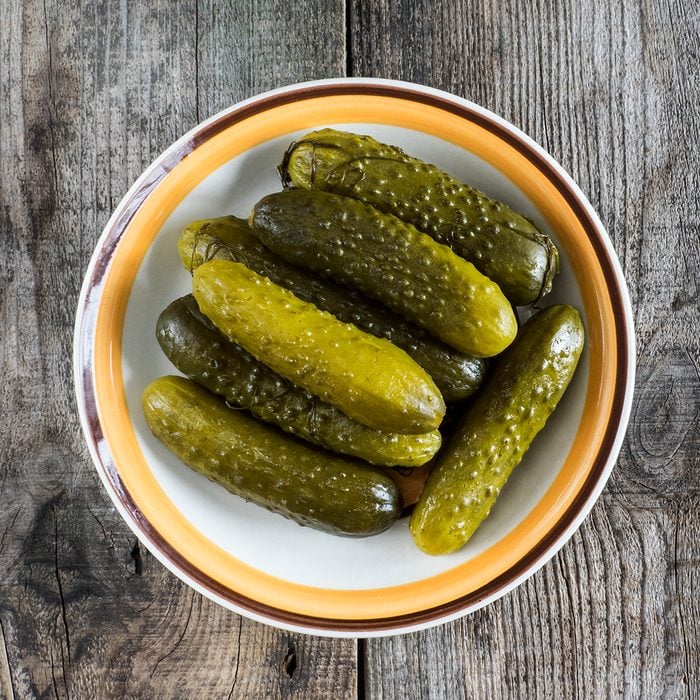
What Are Cornichons?
Cornichons and gherkins are the same thing! You’ll often hear these petite pickles referred to as cornichons in French recipes. Use the terms interchangeably.
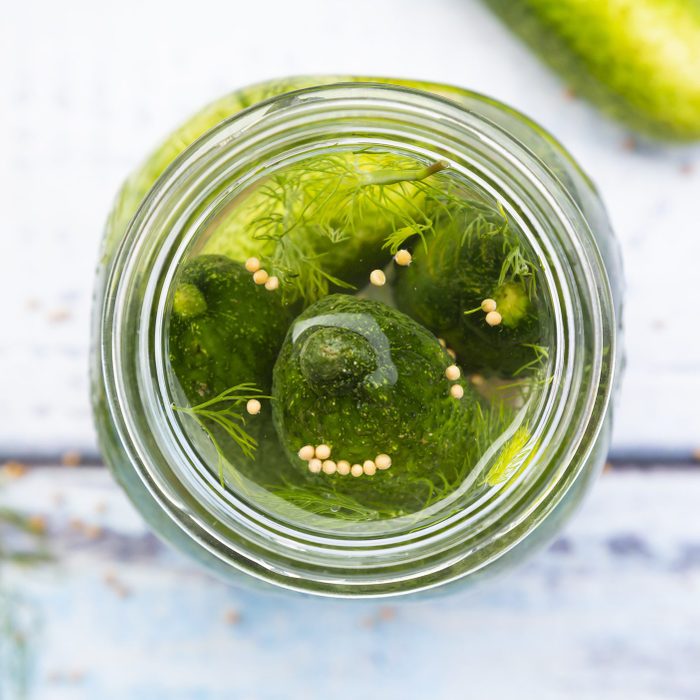
What Are Polish/German Pickles?
Polish or German pickles are similar to dill pickles but usually involve herbs and spices like caraway seeds, mustard seeds and/or peppercorns. The extra spices add a kick you won’t usually find in other types of pickles. These are also usually pickled in wooden barrels for a distinctive taste, though they’re sold in glass jars. Learn how to make this delicious mustard pickle relish or sliced the hot pickles into potato salads, chicken salads or egg salads for added heat.
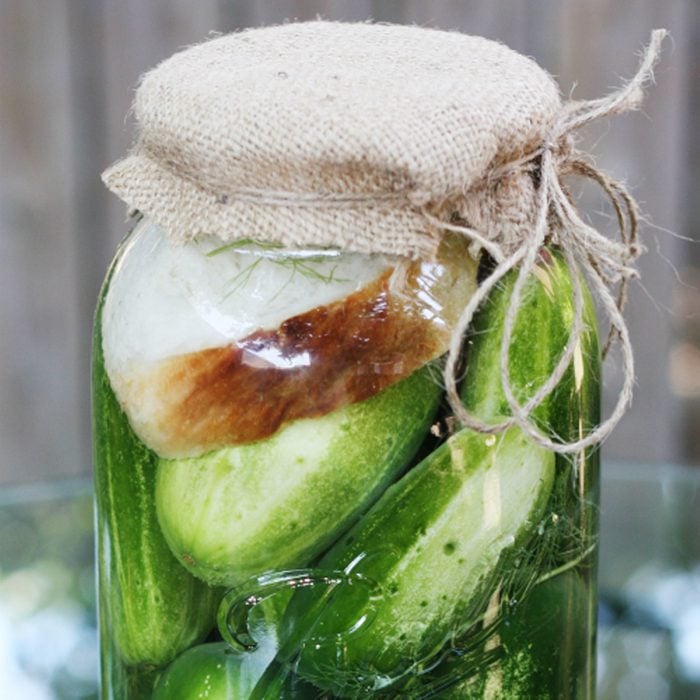
What Are Hungarian Pickles?
Hungarian pickles, also known as kovaszos uborka, are unique because they actually use bread to help along the pickling process (maybe they should be the new bread and butter pickles?). Though you won’t find bread to be part of the typical guide to pickling, the yeast in the bread does the job of pickling in the place of vinegar. Fresh cucumbers are put in a glass with water, salt and spices; topped with a slice of stale bread and then left out in the sun.
Serve Hungarian pickles simply on a slice of fresh bread spread with butter or on the side of hearty meat dishes like Hungarian goulash.
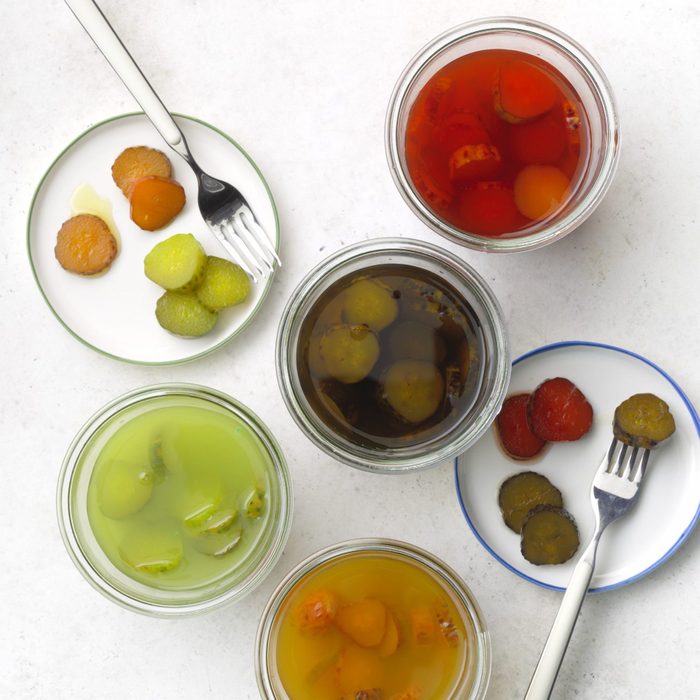
What Are Kool-Aid Pickles?
Kool-Aid pickles are exactly what they sound like—pickles infused with a healthy dose of Kool-Aid powder, vinegar and sugar. Learn how to make the TikTok Kool-Aid pickles or try the hot Chamoy pickles brined in sweet candy powder and hot sauce if you like a bit more kick than Kool-Aid. Eat them whole right out of the jar!
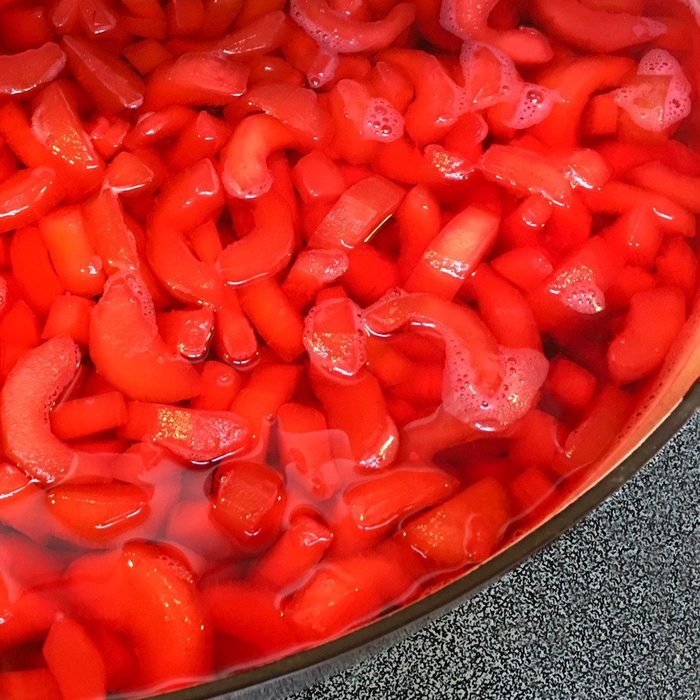
What Are Cinnamon Pickles?
Another Southern creation, cinnamon pickles involve not just cinnamon sticks, but also Cinnamon Red Hot candy. The pickling solution is about what you’d expect for sweet pickles, except for this, you’d also add a bunch of cinnamon sticks and Cinnamon Red Hot candy. Many recipes also call for red food coloring to get the look just right. Enjoy them just like you would a piece of candy—pop the slices right out of the jar and into your mouth.
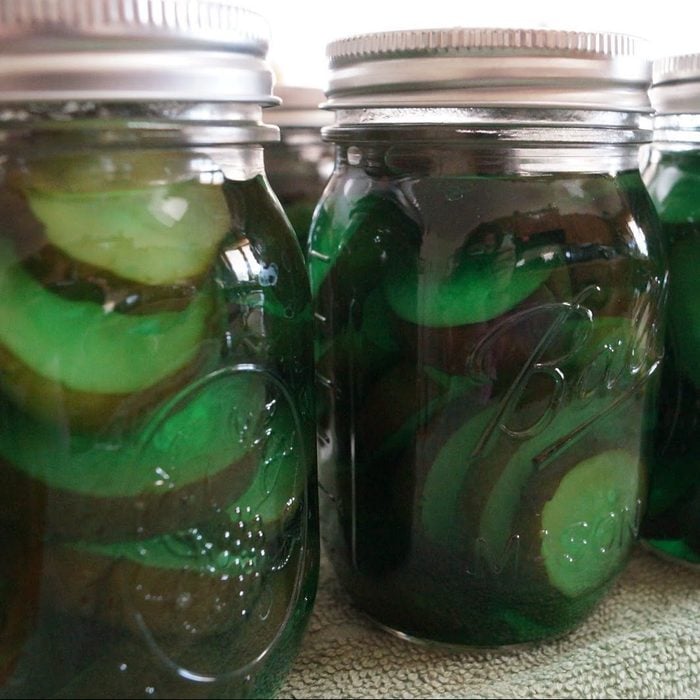
What Are Lime Pickles?
Nope, there are no citrusy limes involved here—the lime refers to pickling lime, a white chemical powder that was used in old canning recipes to add a dash of crispness to the finished product. However, this method isn’t recommended any longer, because it can make you very sick!
The pickling lime itself isn’t the problem. Vinegar, which is usually used in pickling, is acidic and kills off bacteria. Leaving too much pickling lime, an alkaline substance, before canning can neutralize the acidity and allow bacteria to grow.

What Are Refrigerator Pickles?
Making refrigerator pickles is a quicker way to preserve vegetables. This quick method doesn’t require the preciseness of traditional canning or a lot of the gear (though you’ll still want a few canning supplies to help you along).
Refrigerator pickles are made by soaking fresh veggies in a brine of vinegar and spices. You pop the veggies and brine into jars, cover them and store in the refrigerator. This type of pickling isn’t shelf-stable—you’ll have to keep your makes in the fridge and eat them within a few weeks. And in reality, any variety of pickles need to be refrigerated if the jar has been opened.

